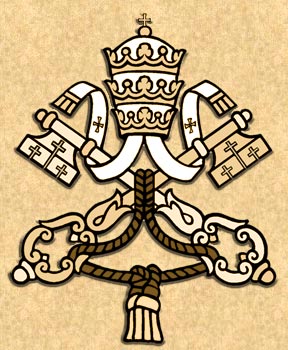Jean de Brébeuf
Jean de Brébeuf, was ordained at thirty-three. He was the first Jesuit Missionary in Huronia (1626), a master of the Indian language.
He worked throughout all the district, founded Mission outposts converted thousands to the faith. He inspired many Jesuits to volunteer for the Missions of New France.
Massive in body, strong yet gentle in character, his visions of the cross and of his future martyrdom were fulfilled when captured March 16, 1649, he was tortured for hours. He was martyred at St. Ignace, six miles from Ste. Marie at the age of fifty-six.
Brebeuf is said to have the heart of a giant. He was known as the apostle of the Hurons. The Indians called him Echon.
Gabriel Lalemant
Gabriel Lalemant, a Jesuit at nineteen, ordained at twenty-seven, a scholar and professor and a College administrator, delicate in body had a strong desire for the Mission of Huronia.
After two years in Canada he left for Huronia. After seven months in Huronia, he was able to speak the Native tongue. For one month he was assistant to Brebeuf and then his companion in Martyrdom for seventeen long hours. He died March 17, 1649 at Ste. Ignace.
He summed up his own strength, "My strength is the strength of God. In Him, I can do all things."
Antoine Daniel
Antoine Daniel, was ordained a priest at twenty-nine, was a missionary near Bias-d'or Lakes (1632), founded the first boys' College in North America (Quebec 1635), laboured in Huronia for twelve years.
In 1648 he made his retreat at Ste. Marie and returned to his mission twelve miles away. On July 4, he just finished Mass when the Mission was attacked. In Mass vestments he faced the enemy, encouraging the Christian converts to live their faith and thus giving time for some to escape.
His martyred body was thrown in the flames of the burning Church. This was at Mount St. Louis. He was forty-eight.
Charles Garnier
Charles Garnier, was a Jesuit Missionary in Huronia at age of thirty-one. For thirteen years he was pastor and missionary to the Hurons and Petuns.
Gentle, innocent, fearless, a person of faith he drew converts to the faith. Even when the Mission of Etharita was attacked and he himself wounded, he continued to baptize neo-phytes and to assist a wounded Huron. In this act he died at the age of forty-four about thirty miles from Ste. Marie.
Noël Chabanel
Noël Chabanel, a Jesuit priest at twenty-eight, a successful professor and humanist in France, had a strong desire to come to the Canadian Missions. Here he was unable to learn the native language and felt useless in the ministry.
He took a vow to remain in the missions, on the cross of seeming failure, always in the shadow of martyrdom. Even his martyrdom came secretly at the hands of an apostate on December 8, 1649 on the Nottawasaga, twenty-five miles from Ste. Marie.
Isaac Jogues
Isaac Jogues, came to Huronia in 1636, supplied at mission outposts for three years, helped to build Ste. Marie (1639), explored as far west as Sault Ste. Marie.
Captured by the Iroquois when returning to Ste. Marie from Quebec (1642), he was tortured, lost his fingers, made a slave. He escaped to France, but returned the same year to again be an emissary and missionary to the Iroquois.
He was martyred at Auriesville, N.Y. at age of thirty-nine.
René Goupil
René Goupil, had to leave the Jesuit novitiate because of ill health. He studied medicine and offered his services to the Jesuit missions in Canada. On his way to Ste. Marie, he and Isaac Jogues were captured and tortured.
Isaac Jogues received his vows into the Society of Jesus. A month later, he was martyred while making the Sign of the Cross on a child. It took place at Auriesville, N.Y. He was thirty-five.
He was the first of the eight Martyrs to receive the palm of Martyrdom.
Jean de Lalande
Jean de Lalande, at nineteen offered his services as a layman to the Jesuits in New France. He accompanied Jogues to the Mohawk Mission (1646), was captured with him and tortured. He saw Jogues martyred. On the following day (October 19, 1646), he himself was killed, a martyr, at Auriesville, N.Y.
December celebrations and farewells
3 days ago









